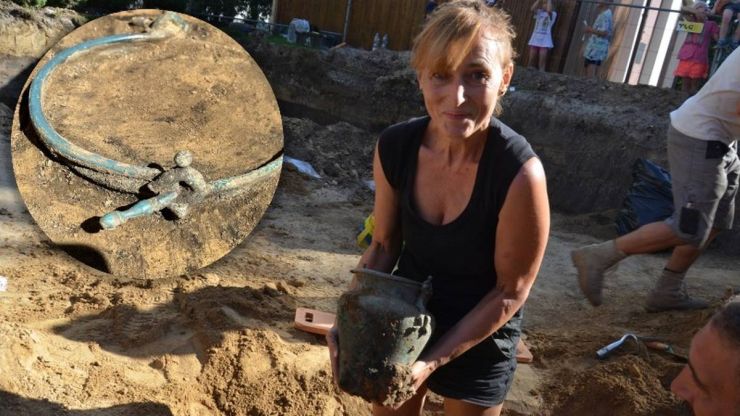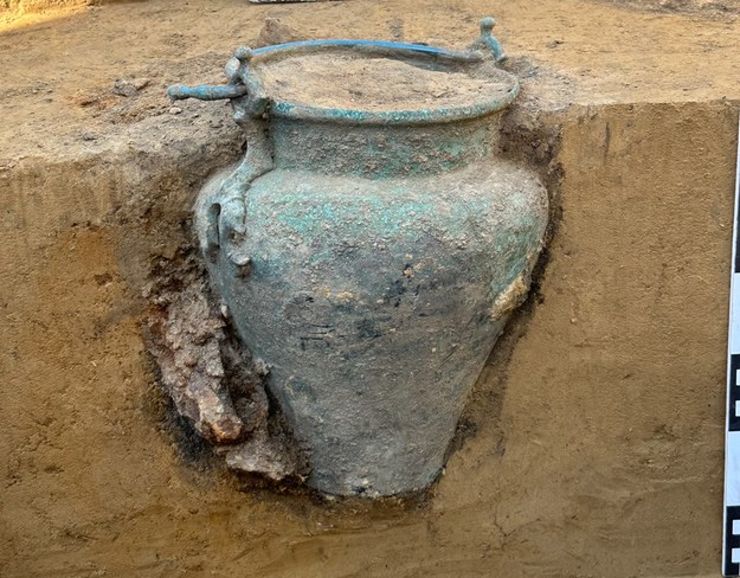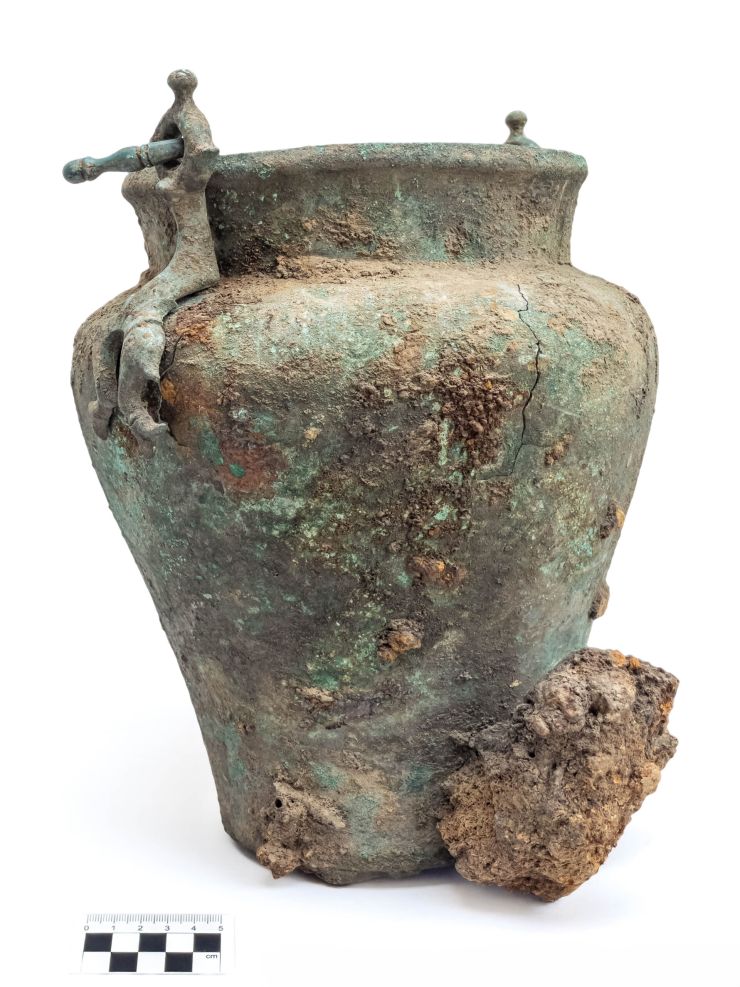An unusual cemetery of the Priory culture and a warrior's grave with a perfectly preserved Roman situla in Poland
Categories: Nálezy nejenom s detektorem kovů ve východní Evropě
Archaeologists have uncovered a richly furnished Iron Age war grave in a cemetery in Kazimierz Wielka, Poland. It contained iron weapons and, in particular, a very rare surviving Roman bronze urn - a situla from the younger pre-Roman and early Roman period between the 1st century BC and the 2nd century AD.
The imported vessel from the Roman Empire still contains the cremated remains of the deceased. It is in beautiful and intact condition. The bronze handle runs through the fittings of the vessel with dolphin-shaped decorations. The vessel form itself has been classified as Eggers type 18, a very rare import in Poland. Only seven of these have been found so far, four of which were used as urns.
Iron weapons were also found with the urn in the burial; a sword, part of a shield and two spearheads. They were deliberately ritually bent and burned in accordance with the cremation practices of the Prior culture. According to archaeologists, it will only be possible to date them more precisely after conservation work has been carried out and after some elements of the weapons have been analysed.
Another unique discovery is the skeletal graves, which were very unusual for the Prior culture. The people of the Prior culture usually burned their dead, but in this cemetery the number of skeletal graves far exceeds the number of cremations. Since excavations began at the cemetery three years ago, archaeologists have uncovered only four urn burials, 23 skeletal graves, and 12 quadrangular burial tombstones.
All of the inhumations are oriented N-S with their heads to the south. The bodies lay on their sides in a crouched position. Most of the burials are female as indicated by jewellery, fragments of clothing and grave goods. One female skeleton was adorned with a double necklace of glass, stone and bronze beads with bucket-shaped pendants of bronze and iron. Above the head and on the chest were two identical bronze brooches, which date the grave to the late 2nd century. These are the youngest objects discovered in the cemetery to date.
Some of the women were missing upper body bones, while the rest of the skeleton was intact. The bones were probably deliberately removed (according to unknown practice) when the graves were reopened shortly after burial, when the soft tissues had already decayed.
The project is being worked on by Krakow archaeologists from the PRYNCYPAT company led by Marcin Przybyła in cooperation with the Institute of Archaeology at Jagiellonian University. In addition to the graves of the Przeworsk culture, they also discovered the remains of 160 archaeological objects from the Neolithic and earlier Bronze Age.
Roman Němec
Sources: polsatnews.pl, thehistoriblog.com, rmf24.pl
- Finds from the Roman period using metal detectors in LH.





 Situla in situ before retrieval
Situla in situ before retrieval
The article is included in categories: